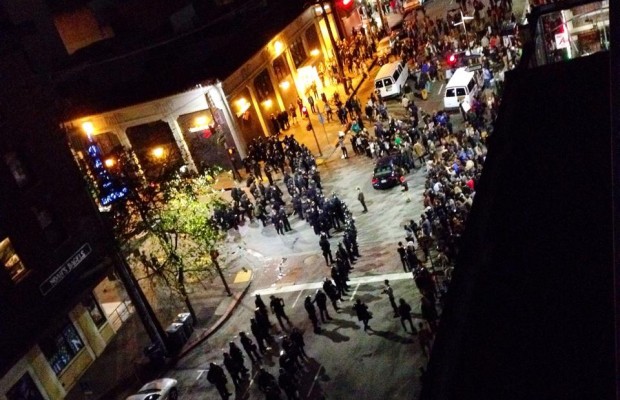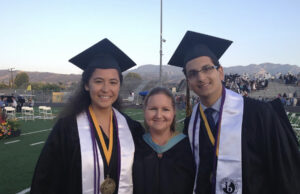Alumni join Berkeley protests in response to police brutality

NPHS alumni joined protests at the University of California, Berkeley in response to the recent wave of police brutality starting with a string of fatal police shootings over the summer.
According to 2013 alumna Sravya Singampalli, protesters have organized marches from Berkeley to Oakland with crowds of about 1,000 students and residents.
“You feel such an immense power in the crowd when you look around and see the determination in (the protesters’) faces and voices. It’s completely moving and inspiring to see everyone chanting and united for a single cause,” Singampalli said.
Several fatal police shootings, such as that of Michael Brown in Ferguson, Missouri, have sparked demonstrations against police brutality nationwide. There are speculations as to what caused officer Darren Wilson to shoot Brown; some rumor that the shooting was completely unprovoked. Wilson was not indicted for the murder, leading many to question the responsibility of police for their actions.
Justine Sizemore, 2014 alumni, has not been personally involved with the protests, but has been actively keeping up with the news locally and nationwide. “I absolutely support the stand against police brutality and systematic racism which plagues both American law enforcement and our justice system,” Sizemore said. “Racism didn’t end with Jim Crow and it is the brave actions of those who are willing to stand up and fight against the corrupt system that make change happen.”
From classmates who had taken part of the protests, Sizemore heard stories of tear gas and some students throwing bricks, and she commented that the protests “got pretty out of hand.” Stores boarded up their windows or shut down, and the drone of helicopters could be heard for a week straight. Incidents of looting and vandalism caused the police to use some violent methods against protestors, such as when “the police force decked out in riot gear and gas masks, barricaded in, and unleashed tear gas on an isolated group of protesters, who were doing nothing more than chanting,” Singampalli added.
She added that the use of tear gas affected students who were not involved in the protests; in one incident, it wafted into residence halls, trapping students inside. Additionally, she said that she has seen officers “manhandle and intimidate activists.” Police arrested 150 students.
“There was an overwhelming sense of irony that the officers were using police brutality against activists protesting the police brutality,” Singampalli said. While she “wholeheartedly condones” the actions of the protesters, she does not support the actions taken by the police. She believes that the incidents that spurred the Berkeley protests as well as larger movements need to be addressed. She adds that the media focuses on groups of “anarchist aggressors” rather than the whole of the otherwise peaceful protests against police brutality.
While Sizemore fully supports “the stand against police brutality and systematic racism which plagues both American law enforcement and our justice system,” she criticizes the actions of those whom she calls “anarchists who try and manipulate the movement.”
“Those who turn peaceful protests into violent riots and lash out in the hopes of becoming the center of attention are distracting from the real issue,” said Sizemore. “There are still those who are out protesting peacefully and standing in support of the suffering families who have lost loved ones to a racist police state.”
“We need to show the world that we will not sit silent while the flawed and corrupt system continues to take countless black lives,” Singampalli said.

